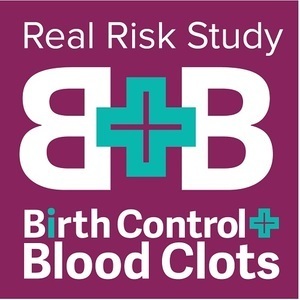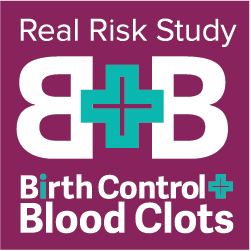Sometimes I just want to say stop the excuses, stop the rationalizations, just stop defending the pharmaceutical industry and those giving hormonal birth control to girls and women who may actually be harmed or die. That urge to again say just stop it came up for me because of a reply to an article about Theresa Buccellato, a sixteen-year-old who died from a pulmonary embolism while using Ortho-Cept birth control. The article entitled What Everyone Needs to Know About Hormonal Birth Control, written by Theresa’s mother, explains what she hopes others will learn and what she didn’t know when a doctor prescribed birth control to her daughter. Theresa had an undiagnosed clotting disorder that medical professionals don’t test for before prescribing hormonal birth control.
The article spoke to me because my own daughter died in 2013 of a pulmonary embolism while she was using the hormonal birth control NuvaRing. She did not have a clotting disorder, but after her death I questioned the doctor who treated her in the ICU as to why my daughter developed massive bi-lateral pulmonary embolisms. It was through my persistent questioning that the doctor acknowledged that the underlying factor for a massive blood clot like the one causing my daughter’s death was hormonal birth control. So I dug into the issues of what women know or don’t know about these drugs that are prescribed so easily to them.
I am perplexed by any medical professional’s desire to “somewhat” defend the pharmaceutical industry. There can be no “somewhat” in any defense. I have read a lot of the information given to women and I assure you that it is neither clearly written nor easily understood by consumers, even if they read it.
By the time a young woman has gone to her doctor/nurse practitioner and been told that the birth control is safe, filled the prescription and taken it home, do you really think she will easily find and understand the information she needs to keep herself safe? If she does question the drug, will she then go back to question her doctor who will probably say again “It’s safe?” Have you read the pamphlets yourself? They are written in medical and statistical jargon that only those with medical training can have a hope of understanding, and most doctors have no clue as to how to correctly interpret the statistical data. (This is well documented in the book “Risk Savvy” by Prof. Gerd Gigerenzer, PhD.) Did he/she advise her that some women have clotting disorders and mention that increases the risk? Did her doctor tell her that a small number of women develop serious life threatening reactions and tell her the signs and symptoms she should be alert for? Or did he/she just send her to the pharmacist in hopes that someone else would explain the risk and the warning signs/symptoms or that the she will read the pamphlet and figure it out at home?
Do I want to criticize the pharmaceutical companies, the FDA, and the medical practitioners who prescribe these drugs to women? Yes, I most certainly do.
I will only focus on Ortho-Cept here because that is the drug that was prescribed for Theresa, but the same critiques can be said for almost every other combination pill, patch or ring package insert. Ortho-Cept prescribing information is here. The following is included as a “black box” warning in the most recent version (2015) of the Ortho-Cept patient information and reads as follows:
“WARNING: CARDIOVASCULAR RISK ASSOCIATED WITH SMOKING Cigarette smoking increases the risk of serious cardiovascular events from combination oral contraceptive use. This risk increases with age, particularly in women over 35 years of age, and with the number of cigarettes smoked. For this reason, combination oral contraceptives, including ORTHO-CEPT, should not be used by women who are over 35 years of age and smoke.”
This Black Box Warning statement infers that if you are a non-smoker and under the age of 35, that you should be able to safely use Ortho-Cept. It also infers that if you are a smoker, even though you need to be concerned, you don’t need to be too concerned unless you are over 35 years of age and smoke. This is misleading, I think.
The pamphlet mentions that risks associated with taking oral contraceptives increase significantly if you have a clotting disorder with no explanation of the increase rate or that you can be tested. (See page 29).
In the same 2015 Ortho-Cept prescribing insert, the risks associated with taking oral contraception aren’t listed until page 38, and the warning signs for a blood clot, stroke or heart attack aren’t given until page 41. (These may be smaller page numbers in the actual patient pamphlet, which I could not find on the internet.)
No one wants to put the real risk information up front because they believe it will scare women from using hormonal birth control. They call it fear-mongering or a “Pill Scare” but the reality is that some women will be harmed and there are other non-hormonal options for birth control. Even the hormonal, non estrogenic, IUDs have safer rates for blood clots.
Your argument about Factor V Leiden testing stated that there was a hypothetical rate of a five-fold risk in a “normal” person using birth control to be 5 in 10,000. The truth is higher, and the rate given for Desogestrel containing BCP by the European Medicines Agency is that the rate for a “normal” woman is somewhere between 9-12 per year out of 10,000 women. The FDA and U.S. physician associations have kept their range lower and do not break out the rates for the differing progestins used in hormonal birth control. So if the rate is 30 to 35 times higher for someone with Factor V Leiden then the number of women with blood clots would be between 30 and 35 women per year per 10,000 women using a hormonal birth control with Desogestrel. Do we really intend to dismiss the lives of 30 to 35 women because the other 99.7% – would not have a clot that year but may get one the next year, especially considering that the risk for blood clots increases with age? Then there is the whole other issue of what these hormones are doing to increase certain cancers or affect other organs, which no one seems to want to talk about either. They’d rather focus on the benefits of a slight decrease in a few cancers.
The reality is that approximately 2,000,000 women in the U.S. use a Desogestrel or Drospirenone (with the same risk rate as Desogestrel) birth control. This means that 1,300 to 2,280 “normal” non Factor V Leiden women using these hormones will get a blood clot (95% of 2,000,000 or 1,900,000 women). Five percent of women with factor V Leiden or 100,000 women are 30 to 35 times more likely to clot. This means approximately 300 to 350 women with Factor V Leiden will be seriously affected by hormonal birth control each year. The total for all blood clot affected women using Desogestrel or Drospirenone is between 1,700 to 2,600 per year in the U.S. Keep in mind that we are discussing human lives, not just some unpleasant but survivable medical condition.
You also argued that the risk of blood clots during pregnancy is higher and I agree that it is, but women who are pregnant are monitored much more closely than women handed a prescription for hormonal birth control. In addition, women are not constantly pregnant/post delivery but women on birth control are given the pill/patches/ring to use continually year after year.
Laura Femia Buccellato says that she wasn’t even aware of a blood test that would have shown her daughter had Factor V Leiden and was therefore at higher risk. The doctor didn’t tell her, it was most likely not discussed in any school class, and Laura had to find out the very worst way possible by having her daughter die. Like Laura, I would have gladly paid out of pocket for any test that would have prevented my daughter’s death. In addition, going into all the false positive analysis simply tells me that you don’t understand that a false positive would have been a good thing as it would have prevented Theresa from going on an estrogen based birth control and would have saved her life.
Laura and Theresa were not aware of the risk in general, the risk of a clotting disorder or the signs and symptoms because no one told them. No one talked about it. That’s the point! If Laura had known there was a test for clotting disorders, she would have had her daughter tested. If someone had talked with Laura and Theresa about signs and symptoms they might have been able to recognize the onset prior to it becoming fatal.
Women, myself included, are talking about these issues because all women need to know the short and long-term ramifications of what is being put into their bodies.
Theresa was not simply a statistic. My daughter is also not a statistic to be dismissed for the benefit of preventing pregnancy. As a friend of my husband puts it, “If the odds are a million to one and you are the one, for you that’s 100 percent.”
We can play the numbers game all we want, but the reality is that some women will be harmed, some will die and they are human beings not numbers on someone’s spreadsheet. There is risk. The truth is that these drugs have risks and women are not clearly educated/informed about those risks (in fact the risks are obfuscated or hidden) nor are they clearly taught the signs and symptoms to seek medical help and protect themselves if they are unlucky enough to be one of the women harmed.
Without the awareness of the real and potential risks of hormonal birth control induced blood clots, women are not likely to recognize or react to the early warning signals of a blood clot. As you well know, blood clots can be extremely dangerous and women and those who love them need to be fully prepared to react quickly in order to save their lives.
Real Risk Study: Birth Control and Blood Clots
Lucine Health Sciences and Hormones Matter are conducting research to investigate the relationship between hormonal birth control and blood clots. If you or a loved one have suffered from a blood clot while using hormonal birth control, please consider participating. We are also looking for participants who have been using hormonal birth control for at least one year and have NOT had a blood clot, as well as women who have NEVER used hormonal birth control. For more information or to participate, click here.
We need your help.
Hormones Matter needs funding now. Our research funding was cut recently and because of our commitment to independent health research and journalism unbiased by commercial interests, we allow minimal advertising on the site. That means all funding must come from you, our readers. Don’t let Hormones Matter die.





















